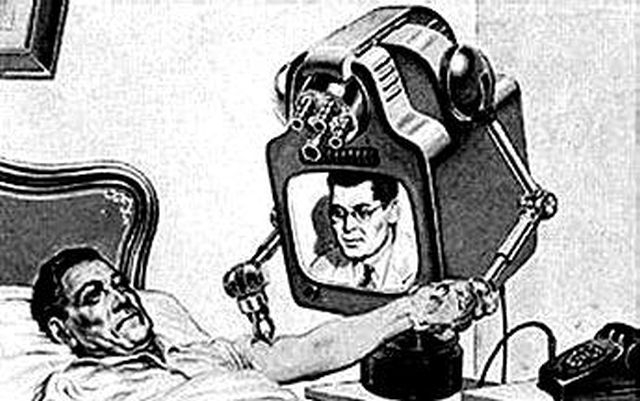Teledoctors vs Traditional Healthcare: Which is Better?
Teledoctors vs Traditional Healthcare: Which is Better?
Blog Article
Teledoctors: Connecting the Space Between Clients and Doctor
The development of teledoctors stands for a considerable change in the healthcare landscape, supplying solutions to long-lasting ease of access concerns faced by individuals and service providers alike. By incorporating telemedicine right into conventional techniques, healthcare systems can get to remote and underserved populaces, offering vital medical consultations without the obstacles of distance and travel.
Surge of Telemedicine

The surge of telemedicine is additionally sustained by the demand for economical health care. Health care systems globally are under pressure to lower expenditures while keeping high quality care, and telemedicine provides a viable solution. By decreasing the demand for physical sees, telemedicine reduces overhead prices for medical care facilities and ultimately lowers the monetary concern on patients.
In Addition, the COVID-19 pandemic worked as a driver, accelerating the adoption of telemedicine methods. Social distancing procedures and the demand to decrease direct exposure risk demanded a shift towards remote appointments, motivating regulative bodies to support and adjust telehealth services. This change has not only tried and tested telemedicine's effectiveness but additionally its prospective to evolve as a staple part of contemporary medical care systems.
Benefits for Patients
Largely, telemedicine boosts accessibility, enabling individuals in underserved or remote locations to get in touch with healthcare suppliers without the demand for extensive travel. Telemedicine likewise provides individuals the comfort of obtaining clinical recommendations and therapy from the convenience of their homes, lowering the time and cost linked with taking a trip to a healthcare facility.
Moreover, telemedicine supports continuity of treatment by facilitating regular follow-ups and surveillance, which are critical for taking care of persistent problems. Individuals can quickly arrange visits and gain access to medical care services outside traditional office hours, accommodating their busy way of lives. This versatility causes boosted client interaction and adherence to treatment plans, potentially resulting in far better wellness results.
Furthermore, telemedicine can help minimize the threat of infection transmission, a worry heightened by the COVID-19 pandemic. By minimizing the demand for in-person brows through, individuals can avoid jampacked waiting spaces and decrease direct exposure to transmittable diseases. Ultimately, telemedicine equips clients by providing prompt, effective, and individualized health care services.
Benefits for Companies
For doctor, telemedicine provides substantial benefits that enhance the efficiency and reach of their technique. By leveraging digital modern technology, suppliers can extend their services to a more comprehensive market, consisting of those in remote or underserved areas. This not just alleviates geographical barriers yet also enhances patient retention and purchase by making medical care much more accessible.
With telemedicine, the demand for physical room lessens, permitting companies to save on actual estate and functional expenditures. This flexibility can lead to increased patient visit our website consultations per day, thus increasing income potential.
Telemedicine also fosters a more collaborative environment for doctor. teledoctors. It enables seamless sharing of patient details amongst experts, enhancing diagnostic accuracy and therapy end results. In addition, electronic platforms can integrate with digital health and wellness records (EHRs), enhancing information precision and enhancing administrative jobs
Furthermore, telemedicine enhances person contentment, which is vital for supplier track record and success. By providing practical and timely treatment, providers can boost person loyalty and involvement, additionally strengthening the provider-patient partnership.
Conquering Challenges
While telemedicine supplies various benefits for medical care service providers, it likewise offers obstacles that need cautious factor to consider. Healthcare companies need to stick to stringent policies like HIPAA to secure delicate information, consequently calling for financial investment in protected systems and recurring team training. teledoctors.
Another challenge is the digital divide, which can impede access to telemedicine services. Not all individuals have equivalent access to the needed technology or net connectivity, particularly those in country or underserved locations. This disparity can exacerbate existing healthcare inequalities, making it important for carriers to discover different remedies, such as collaborations with area companies, to link this space.
Moreover, there are restrictions in performing physical exams from another location. Particular problems need in-person assessment, highlighting the need for a crossbreed version that incorporates telemedicine with standard check outs. When telemedicine is appropriate and making certain seamless transitions in between online and in-person treatment., suppliers should navigate these obstacles by developing methods to determine.
Future of Healthcare
The future of medical care is poised for a transformative evolution, driven by the quick combination of technology and advancement. Central to this shift is the surge of telemedicine, which is redefining how clinical services are accessed and supplied. With developments in electronic communication, telehealth systems are ending up being more advanced, offering real-time examinations, remote patient tracking, and personalized care strategies. This not only improves person benefit yet also broadens accessibility to healthcare, especially in rural and underserved locations.
Expert system (AI) and device learning are also readied to play essential duties. These technologies can evaluate huge quantities of information, providing anticipating insights right into patient health and wellness, enhancing analysis precision, and individualizing therapy strategies. AI-driven devices can boost healthcare companies' capacities, bring about even more enlightened decision-making and far better person end results.
Furthermore, wearable innovation and Web of Clinical Things (IoMT) tools are reinventing patient interaction and aggressive wellness management. These gadgets allow continual health monitoring, permitting very early discovery of possible problems and timely interventions.
As these modern technologies remain to advance, they assure to create a more efficient, easily accessible, and patient-centric healthcare system, ultimately bridging the void in between patients and health care carriers. - teledoctors
Final Thought
Teledoctors are transforming health care by published here significantly boosting availability and effectiveness via remote appointments. This advancement sustains people in underserved areas by supplying prompt medical guidance without requiring physical sees, therefore enhancing client engagement and continuity of treatment. Doctor benefit from more efficient time monitoring and boosted partnership opportunities. Despite obstacles such as regulative issues and technical obstacles, the future of healthcare appears significantly check comprehensive and efficient as a result of the combination of telemedicine into typical care versions.

As telemedicine proceeds to reshape health care delivery, individuals stand to gain considerably from this transformation. Mostly, telemedicine boosts ease of access, permitting patients in underserved or remote locations to speak with medical care service providers without the requirement for extensive travel. Telemedicine likewise supplies patients the benefit of obtaining clinical guidance and treatment from the convenience of their homes, lowering the time and cost connected with taking a trip to a medical care center.
Ultimately, telemedicine equips individuals by giving prompt, efficient, and personalized health care solutions.
Report this page